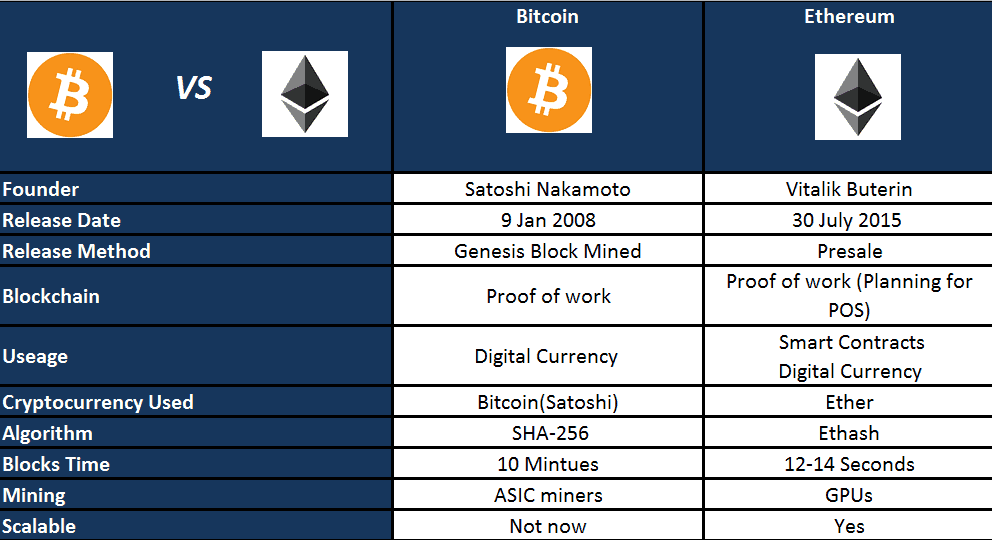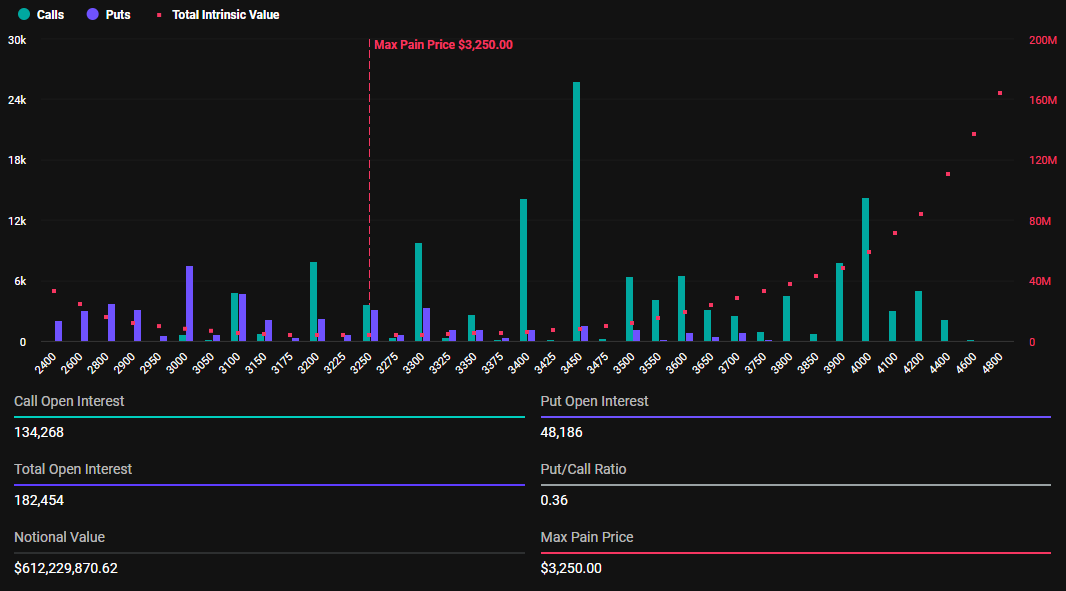Learn at your own speed with online courses
The rise of online learning has revolutionized how we acquire knowledge, offering unparalleled flexibility and accessibility. This exploration delves into the advantages of self-paced online courses, examining various course formats, effective learning strategies, and the transformative role of technology. We'll also consider the future of online education and how it will continue to empower learners worldwide.
From mastering a new skill to pursuing a professional certification, self-paced online courses cater to diverse learning styles and goals. This approach allows individuals to control the pace, focus on areas requiring more attention, and integrate learning seamlessly into their lives. This adaptability is key to successful learning, promoting deeper understanding and improved retention.
The Appeal of Self-Paced Learning
Self-paced online courses offer a revolutionary approach to education, empowering learners to control their learning journey and achieve their academic goals at a rhythm that suits their individual needs and preferences. This flexibility is a significant advantage, particularly in today's fast-paced and demanding world. The ability to learn at one's own speed allows for a more effective and enjoyable learning experience.The advantages of learning at one's own speed are numerous and impactful.
Flexibility allows individuals to integrate learning seamlessly into their existing schedules, whether that involves managing a full-time job, raising a family, or pursuing other personal commitments. This personalized approach significantly reduces stress and enhances the overall learning experience, leading to better knowledge retention and application.
Catering to Diverse Learning Styles
Different individuals learn in different ways. Some are visual learners, thriving on diagrams and videos; others are auditory learners, preferring lectures and podcasts; and still others are kinesthetic learners, benefiting from hands-on activities and real-world applications. Self-paced online courses often incorporate a variety of learning materials and activities to cater to these diverse learning styles. For example, a course might include video lectures, interactive quizzes, downloadable reading materials, and practical exercises, ensuring that learners can engage with the content in a manner that best suits their individual preferences.
This multi-modal approach maximizes comprehension and retention.
Success Stories of Self-Paced Learners
Many individuals have achieved remarkable success through self-paced online learning. For instance, a single mother, working two jobs, successfully completed a self-paced online course in project management, leading to a significant promotion and increased earning potential. Her flexibility to study at odd hours, fitting learning around her work and childcare responsibilities, demonstrates the power of self-paced learning. Another example is a recent college graduate who utilized self-paced courses to upskill in data analytics, landing a high-demand job in a competitive market.
The ability to learn at their own pace, revisiting challenging topics as needed, proved invaluable.
Comparison of Self-Paced and Traditional Learning
| Feature | Self-Paced Online Learning | Traditional Classroom Learning |
|---|---|---|
| Flexibility | High; learn anytime, anywhere | Low; fixed schedule and location |
| Cost | Potentially lower; reduced travel and accommodation expenses | Potentially higher; tuition fees, books, travel, and accommodation |
| Learning Outcomes | Dependent on individual motivation and discipline; can be highly effective with self-directed learning | Generally consistent across learners; relies heavily on instructor-led instruction |
| Pace | Learner-controlled; adjust speed based on understanding | Instructor-controlled; fixed pace for all students |
Types of Online Courses Offering Self-Paced Learning
The flexibility of self-paced online learning is greatly enhanced by the variety of course formats available. Understanding these different formats and their respective strengths and weaknesses is crucial for learners to choose the best learning experience tailored to their individual needs and preferences. This section will explore several common types of online courses that offer self-paced learning opportunities.
Video Lecture Courses
Video lectures remain a cornerstone of many online courses. These courses typically consist of pre-recorded video lessons delivered by instructors. The benefit for self-paced learners is the ability to pause, rewind, and rewatch content as needed, accommodating diverse learning speeds and styles. Learners can review complex concepts multiple times, ensuring thorough understanding before moving forward. However, the passive nature of simply watching videos might not suit all learners, and the lack of immediate interaction can lead to decreased engagement for some.
- Pros: Convenient, easily accessible, allows for review and repetition, often incorporates visual aids.
- Cons: Can be passive, may lack interactivity, requires self-discipline to stay engaged.
Interactive Exercise Courses
These courses incorporate interactive elements like quizzes, simulations, and problem-solving exercises directly within the learning modules. This active learning approach fosters deeper understanding and knowledge retention compared to passive video lectures. The immediate feedback provided by these exercises allows learners to identify knowledge gaps and address them promptly. Examples include coding challenges in programming courses or interactive case studies in business courses.
However, the effectiveness depends on the quality and relevance of the interactive components. Poorly designed exercises can be frustrating and unproductive.
- Pros: Active learning, immediate feedback, improved knowledge retention, caters to kinesthetic learners.
- Cons: Requires more active participation, may be challenging for some learners, quality of exercises is crucial.
Assessment-Focused Courses
These courses emphasize regular assessments to gauge learner progress and understanding. These assessments can take various forms, including quizzes, assignments, projects, and even exams. The self-paced nature allows learners to dedicate sufficient time to each assessment, ensuring thorough preparation. However, the pressure of regular assessments might not be suitable for all learners, and the focus on assessment might overshadow the learning process itself for some.
A well-structured assessment plan, however, can provide valuable feedback and track learning progress effectively.
- Pros: Tracks progress effectively, provides regular feedback, encourages consistent learning, prepares learners for formal examinations.
- Cons: Can be stressful for some learners, might overshadow the learning process if not carefully designed, requires self-discipline to manage assessment deadlines.
Blended Learning Courses
Blended learning courses combine elements of online and offline learning. For example, a course might include online video lectures supplemented by in-person workshops or group projects. This approach caters to diverse learning styles and preferences, offering a balance between structured learning and independent study. The flexibility of self-paced online components allows learners to work at their own speed while the offline components provide opportunities for interaction and collaboration.
However, the success of blended learning depends on the effective integration of online and offline components. Poorly coordinated elements can lead to a disjointed learning experience.
- Pros: Combines the benefits of online and offline learning, caters to diverse learning styles, offers opportunities for interaction and collaboration.
- Cons: Requires more coordination and organization, may not be suitable for learners who prefer entirely independent study, access to offline components might be limited.
Effective Strategies for Self-Paced Online Learning
Successfully navigating self-paced online learning requires a proactive approach to time management, motivation, and resource utilization. This section will explore effective strategies to help you maximize your learning experience and achieve your academic or professional goals. It's crucial to remember that self-paced doesn't mean self-neglect; rather, it empowers you to tailor your learning journey to your individual needs and preferences.
Effective Time Management Techniques for Self-Paced Learners
Effective time management is paramount in self-paced learning. Without a structured approach, it's easy to fall behind or become overwhelmed. Creating a realistic schedule and sticking to it is key. This involves identifying your peak productivity times and allocating those periods to challenging learning tasks.
Creating a Personalized Learning Plan
A personalized learning plan provides a roadmap for your online learning journey. This plan should include specific learning goals, a timeline for completing course materials, and strategies for staying on track. Here's a step-by-step guide:
- Define Your Goals: Clearly articulate what you want to achieve through this course. Are you aiming for a specific certification, skill enhancement, or knowledge expansion? Be specific and measurable.
- Break Down the Course: Divide the course into smaller, manageable modules or units. This makes the overall task less daunting and allows for a sense of accomplishment as you complete each segment.
- Create a Schedule: Allocate specific time slots in your week for studying. Consider your other commitments and build in flexibility, but try to maintain consistency.
- Prioritize Tasks: Identify the most crucial learning objectives and tackle those first. This ensures you cover essential material before moving on to less critical topics.
- Regularly Review and Adjust: Periodically review your progress and make necessary adjustments to your schedule. Life happens, so be prepared to adapt your plan as needed.
Tips for Staying Motivated and Avoiding Procrastination
Maintaining motivation in a self-paced environment can be challenging. Procrastination is a common hurdle. Here are some strategies to combat this:
- Set Realistic Goals: Avoid overwhelming yourself with overly ambitious targets. Break down your learning into smaller, achievable steps.
- Reward Yourself: Celebrate your accomplishments, no matter how small. This positive reinforcement helps maintain motivation.
- Find a Study Buddy: Collaborating with a peer can provide accountability and support. Discussing course material can also enhance understanding.
- Minimize Distractions: Create a dedicated study space free from interruptions. Turn off notifications and put your phone away.
- Use the Pomodoro Technique: Work in focused bursts (e.g., 25 minutes) followed by short breaks. This can improve concentration and prevent burnout.
Resources to Enhance Self-Paced Learning
Several tools and resources can significantly enhance your self-paced learning experience.
- Note-Taking Apps (e.g., Evernote, OneNote): These apps help organize notes, ideas, and research materials efficiently.
- Calendar and Task Management Apps (e.g., Google Calendar, Trello): These apps facilitate scheduling, task prioritization, and progress tracking.
- Online Study Groups and Forums: Engaging with fellow learners provides support, fosters collaboration, and encourages accountability.
- Focus and Productivity Apps (e.g., Forest, Freedom): These apps help minimize distractions and enhance concentration during study sessions.
- Grammar and Writing Tools (e.g., Grammarly): These tools ensure high-quality written work, essential for many online courses.
The Role of Technology in Self-Paced Online Learning
Technology is the backbone of self-paced online learning, providing the tools and infrastructure that enable learners to control their educational journey. Without technological advancements, the flexibility and accessibility characteristic of self-paced learning would be severely limited. The impact extends beyond simple access to educational materials; technology actively shapes the learning experience, influencing engagement and ultimately, learning outcomes.Technology facilitates self-paced learning through a variety of means, significantly enhancing the learning experience.
These technological tools not only deliver content but also create interactive and engaging learning environments tailored to individual needs and preferences.
Learning Management Systems (LMS) and Their Functionality
Learning Management Systems (LMS) such as Moodle, Canvas, and Blackboard are central to self-paced online learning. These platforms provide a structured environment for course delivery, tracking learner progress, and facilitating communication between learners and instructors. Features like automated grading, personalized feedback mechanisms, and progress dashboards empower learners to monitor their own learning journey and adjust their pace accordingly.
For instance, a student struggling with a particular module can revisit the materials multiple times without affecting their overall schedule, a feature impossible in traditional classroom settings. Furthermore, LMS often integrate various other technologies, creating a comprehensive learning ecosystem.
Interactive Simulations and Their Impact on Learning
Interactive simulations offer engaging and immersive learning experiences. These digital environments allow learners to actively participate in scenarios and apply theoretical knowledge to practical situations. For example, a medical student can practice surgical procedures in a virtual operating room, or a business student can manage a simulated company, experiencing the consequences of their decisions without real-world risks. This active learning approach significantly improves knowledge retention and application compared to passive learning methods.
The immediate feedback provided by simulations further enhances learning by identifying areas needing improvement.
Technology's Influence on Learning Outcomes and Engagement
The use of diverse technologies significantly impacts both learning outcomes and learner engagement. Studies consistently show that learners engaged with interactive multimedia materials, simulations, and gamified learning platforms demonstrate higher knowledge retention and improved problem-solving skills. The personalized nature of self-paced learning, facilitated by technology, caters to individual learning styles and preferences, boosting motivation and reducing frustration. For example, a visual learner may benefit from video lectures and interactive diagrams, while a kinesthetic learner might prefer simulations and hands-on activities.
The flexibility offered by technology allows learners to choose the learning methods that best suit their individual needs, ultimately leading to better outcomes.
Catering to Diverse Learning Styles and Preferences Through Technology
Technology offers a wide array of tools to accommodate diverse learning styles. Visual learners can benefit from videos, infographics, and interactive diagrams. Auditory learners can listen to podcasts and audio lectures. Kinesthetic learners can engage with simulations, virtual labs, and interactive exercises. Reading/writing learners can utilize text-based materials, discussion forums, and writing assignments.
The adaptability of technology allows for a personalized learning experience, catering to each individual's strengths and weaknesses. This inclusivity ensures that all learners, regardless of their preferred learning style, can access and successfully complete the course material at their own pace.
Visual Representation of the Self-Paced Online Learning Ecosystem
Imagine a three-circle Venn diagram. One circle represents the learner, encompassing their individual learning style, goals, and pace. Another circle represents the technology, including the LMS, interactive simulations, and communication tools. The third circle represents the learning materials, encompassing videos, readings, quizzes, and assignments. The overlapping areas represent the interaction between these three elements.
The largest overlap is between the learner and technology, reflecting the learner's control over their learning path through the technological tools available. A significant overlap also exists between technology and learning materials, showing how technology delivers and interacts with the course content. Finally, a smaller but still significant overlap exists between the learner and the learning materials, indicating the learner's direct engagement with the course content.
This visualization highlights the synergistic relationship between the learner, technology, and learning materials in creating a successful self-paced online learning experience.
Online Education in 2025
Online education is poised for significant transformation by 2025, driven by rapid advancements in technology and evolving learner expectations. Self-paced learning, already a popular choice, will become even more sophisticated and integrated into the wider educational landscape. We can expect a more personalized, accessible, and globally connected learning environment.The anticipated advancements in online education technology by 2025 are multifaceted.
We'll see a considerable increase in the use of immersive technologies like virtual and augmented reality, creating more engaging and interactive learning experiences. Adaptive learning platforms, powered by artificial intelligence, will become commonplace, tailoring the learning path to individual student needs and learning styles. Improved accessibility features, including sophisticated text-to-speech and speech-to-text capabilities, along with advanced screen readers, will ensure inclusivity for learners with disabilities.
Furthermore, the integration of blockchain technology could revolutionize the verification and management of educational credentials, enhancing trust and transparency.
The Impact of Artificial Intelligence and Personalized Learning
Artificial intelligence (AI) will play a pivotal role in shaping the future of self-paced online courses. AI-powered tutors will provide personalized feedback and support, adapting to individual learning styles and paces. Intelligent learning platforms will analyze student performance data to identify knowledge gaps and suggest relevant learning resources. This personalized approach will optimize learning outcomes and improve student engagement.
For example, an AI system might detect a student struggling with a particular concept in a mathematics course and automatically recommend supplemental videos, interactive exercises, or even connect them with a virtual tutor for personalized assistance. This level of individualized support will be crucial in maximizing the effectiveness of self-paced learning.
Predictions Regarding Accessibility, Affordability, and Global Reach
Self-paced online learning is expected to become significantly more accessible and affordable by 2025. The expansion of high-speed internet access globally, coupled with the development of more affordable devices, will break down geographical barriers to education. Open educational resources (OER) and innovative pricing models, such as subscription services and micro-credentials, will make high-quality education more financially attainable for a wider range of learners.
This increased accessibility will lead to a global surge in online learners, fostering greater cultural exchange and collaboration. We can envision a scenario where a student in a rural village in Africa accesses the same high-quality online course as a student in a major city in North America, bridging geographical and socioeconomic divides.
A Typical Online Learning Experience in 2025
Imagine Sarah, a working professional in 2025, deciding to upskill in data analysis. She logs into her personalized learning platform, which uses AI to recommend a self-paced data analysis course tailored to her existing knowledge and learning preferences. The course utilizes a mix of interactive video lectures, gamified assessments, and virtual reality simulations. Sarah's AI tutor monitors her progress, providing real-time feedback and suggesting additional resources when needed.
She can access the course materials anytime, anywhere, on her preferred device. The platform automatically adjusts the difficulty level based on her performance, ensuring she's always challenged but not overwhelmed. Upon completion, Sarah receives a verifiable digital badge, instantly recognized by potential employers, showcasing her newly acquired skills. This seamless and personalized learning experience reflects the transformative potential of self-paced online education in 2025.
Epilogue
Ultimately, learning at your own speed with online courses offers a personalized and empowering educational experience. By leveraging technology, implementing effective strategies, and adapting to individual learning styles, learners can achieve their educational aspirations with greater efficiency and satisfaction. The future of online learning promises even greater personalization and accessibility, further enhancing the transformative power of self-paced education.
Detailed FAQs
What if I fall behind in a self-paced course?
Most self-paced courses offer flexibility. While deadlines might exist for certifications, the pace is generally up to you. Reach out to the course instructor if you need extra support or clarification.
Are self-paced online courses accredited?
Accreditation varies greatly depending on the provider and course. Check the course details carefully before enrolling to ensure it meets your accreditation needs.
How do I stay motivated in a self-paced course?
Set realistic goals, break down large tasks, reward yourself for milestones, and consider studying with others for accountability and support.
What technical skills do I need for online learning?
Basic computer skills and reliable internet access are usually sufficient. Specific software requirements will be Artikeld by the course provider.



